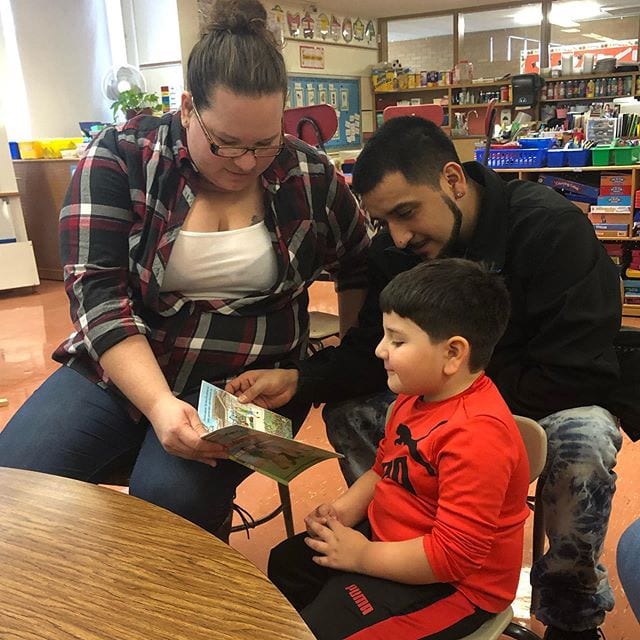One year ago, we saw the beginnings of systemic disruptions sparked by the COVID-19 pandemic and the convergence of health, racial and economic crises that heightened public awareness of structural racism. As we approach this anniversary, we’re reflecting on how cradle-to-career partnerships across the country have relentlessly pursued efforts to transform systems, close opportunity gaps and advance more equitable outcomes. In a challenging year, our 2020 Civic Infrastructure Assessment — a self-assessment completed by all 66 StriveTogether Cradle to Career Network members — gathered rich data on partnership progress toward systems transformation.
At StriveTogether, our goal is to achieve population-level results, cradle to career. To get there, we define systems transformation as a fundamental and institutionalized shift in policies, practices, resources and power structures so that Black, Indigenous, Latinx and Asian youth and families and those living in low-income households can thrive. In this four-part blog series, I’ll share how systems transformation leads to equitable results, with examples of what it looks like to shift policies, practices, resources and power.
 Systems were not designed to support the success of Black, Indigenous, Latinx and Asian youth and families and those living in low-income households. Establishing equitable policies at all levels — institutional, local, state and federal — is a powerful way to transform systems and change the opportunity equation. This requires a cohesive set of strategies to:
Systems were not designed to support the success of Black, Indigenous, Latinx and Asian youth and families and those living in low-income households. Establishing equitable policies at all levels — institutional, local, state and federal — is a powerful way to transform systems and change the opportunity equation. This requires a cohesive set of strategies to:
- Align cradle-to-career systems across sectors;
- Direct resources to evidence-based practices proven to close disparity gaps and advance equitable outcomes; and
- Advocate for direct investment and support of local cradle-to-career civic infrastructure.
Based on local context, cradle-to-career partnerships take up different roles as they advocate and mobilize to create more equitable policy. Partnerships may play different roles alongside partners to develop a shared policy agenda, mobilize the community and monitor policy implementation. Common roles include serving as:
- Data expert: Providing and educating the community about data to support a case for change;
- Partner convener: Convening leaders and community members to identify the problem, develop an action plan and create a viable policy solution;
- Community mobilizer: Using relationships and authority to build community awareness around the issue or policy and organize for change; and
- Advocate: Publicly endorsing an issue or policy, meeting with legislators to educate them on issues and influence policy, or hiring a lobbyist to help build political connections.
Over half of partnerships across the Cradle to Career Network are working to shift policies at the local and/or state levels. Some are supporting youth and family leadership on specific policy priorities like the digital divide, early learning resource allocation and community investment. Six cradle-to-career partnerships supported local ballot initiatives last November to support equitable outcomes from cradle to career, and every ballot initiative passed with strong community support. Some partnerships created new decision-making roles on committees and in initiatives specific to policy development, and others supported youth and families to develop policy initiatives and practice advocacy. Here are a few recent examples:
In Waterbury, Conn., Waterbury Bridge to Success Community Partnership collaborated with Waterbury Public Schools and the State Education Resource Center to establish a District Equity Leadership Team. The team worked to advance racially equitable outcomes by increasing culturally responsive policies and practices. When local data revealed disproportionately higher suspension and expulsion rates for Black and Latinx students compared to their white counterparts, the collaboration led to institutional policy shifts in the district. The result was standardized educator training that changed the culture and climate in the school buildings to better support Black, Indigenous and Latinx students.

In Dayton, Ohio, Learn to Earn Dayton bridged opportunity gaps and improved postsecondary enrollment and completion for Black and Latinx high school students. The team examined data broken down by demographics and hosted listening sessions to align partners. Through institutional policy changes around price transparency, the University of Dayton welcomed their most racially, ethnically and socioeconomically diverse student population yet in 2020. Similarly, Sinclair Community College increased enrollment of students of color and students from low-income households through policy changes to support the seamless transition of college-level credits from high school to college.
 In Racine, Wis., Higher Expectations for Racine County partnered with the city’s housing department to use data to show the connection between housing stability and education outcomes. This work led to housing reforms passed by the Racine City Council. The Rental Empowerment & Neighborhood Tenant Services Initiative passed in April 2020, including establishing the creation of a landlord registry and public database to search property history, updating chronic nuisance codes to include housing code violations, and strengthening enforcement of ordinances barring retaliation against tenants
In Racine, Wis., Higher Expectations for Racine County partnered with the city’s housing department to use data to show the connection between housing stability and education outcomes. This work led to housing reforms passed by the Racine City Council. The Rental Empowerment & Neighborhood Tenant Services Initiative passed in April 2020, including establishing the creation of a landlord registry and public database to search property history, updating chronic nuisance codes to include housing code violations, and strengthening enforcement of ordinances barring retaliation against tenants
As Cradle to Career Network members continue to play a role in advancing an equitable recovery in local communities, we’ll celebrate more policy wins and institutionalized changes to systems and structures to sustain these equitable outcomes.
Read part two in this blog series, focused on shifting practices >>
Read part three in this blog series, focused on shifting resources >>
Read part four in this blog series, focused on shifting power >>





